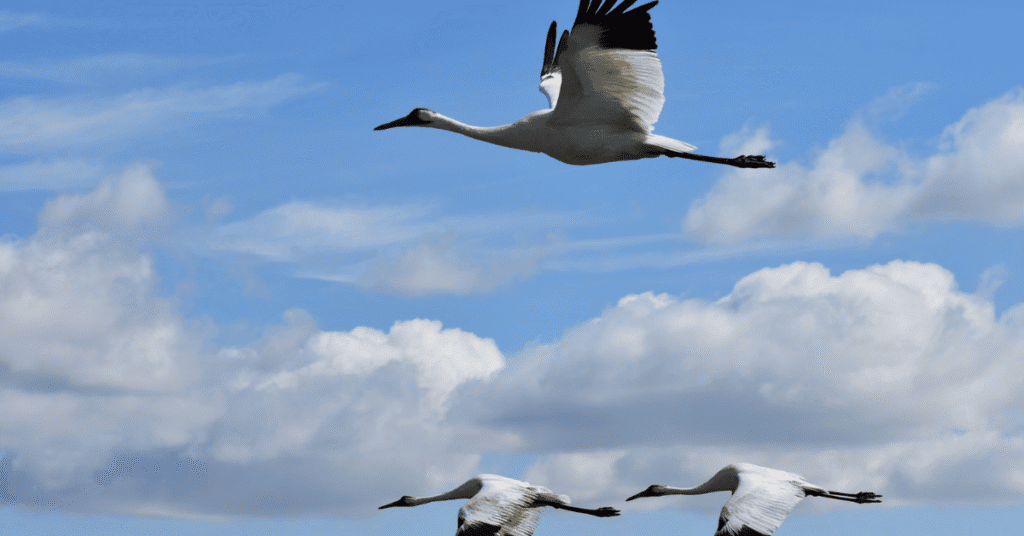The Whooping Crane is one of North America’s rarest and cool birds, standing nearly five feet tall with a wingspan that can stretch over seven feet. Once on the brink of extinction, their populations have slowly recovered thanks to intensive conservation work, and today there are a few special places where you can reliably see them.
Whether they are gathering in their wintering grounds on the Texas coast, nesting in remote Canadian wetlands, or stopping over in Midwest marshes, spotting a Whooping Crane in the wild is an unforgettable experience and a reminder of just how fragile and resilient wildlife can be.
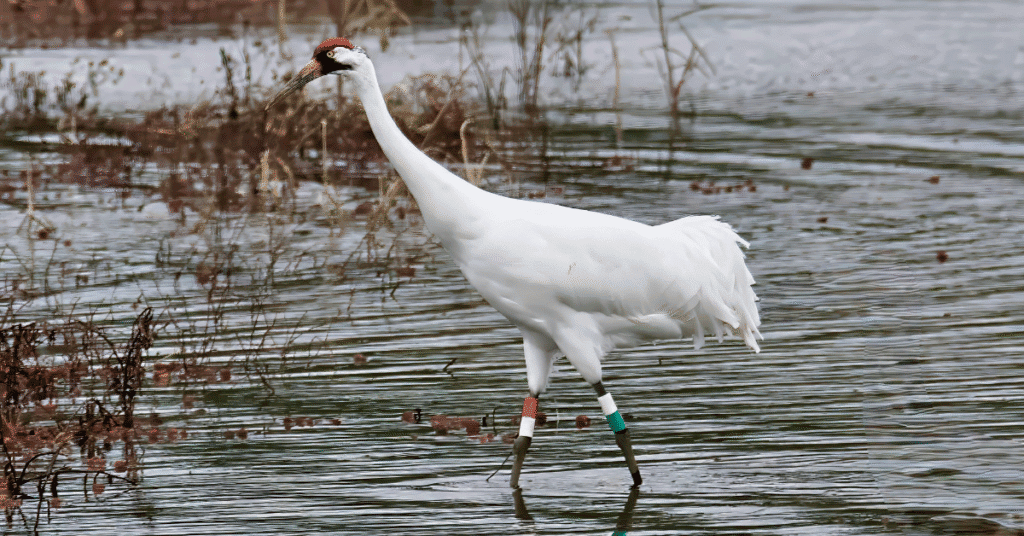
1. Aransas National Wildlife Refuge, Texas
- The only natural wild flock winters here on the Texas Gulf Coast.
- The best place in the world to see Whooping Cranes consistently.
- Boat tours from Rockport/Fulton take birders into the bays where family groups feed on blue crabs and wolfberries.
2. Wood Buffalo National Park, Canada (Alberta/Northwest Territories)
- The cranes’ primary natural breeding grounds.
- Extremely remote, so sightings usually come via research monitoring, not casual birding.
- Still, this park is crucial to the species’ survival.
3. Necedah National Wildlife Refuge, Wisconsin
- Core nesting and reintroduction site for the eastern migratory population.
- Managed wetlands attract Whooping Cranes in spring and summer.
- Excellent for viewing from observation platforms or auto tour routes.
4. Horicon Marsh, Wisconsin
- A stopover and summer site for reintroduced Whooping Cranes.
- Famous for massive flocks of Sandhill Cranes, making it a good place to pick out the rare Whoopers.
- Fall migration is especially promising.
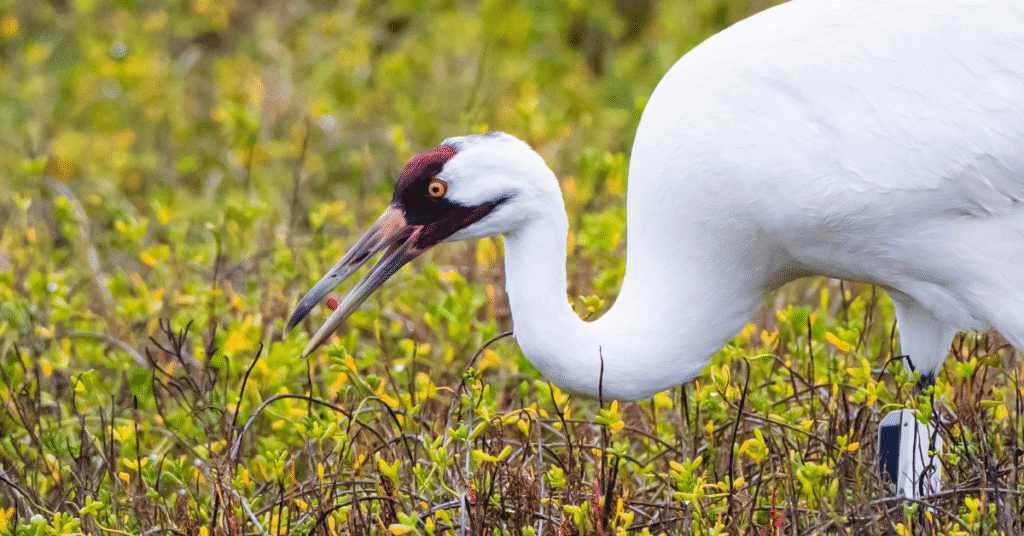
5. Goose Pond Fish and Wildlife Area, Indiana
- It is a key wintering and stopover site for the eastern migratory flock.
- Birders often see both Sandhills and Whooping Cranes roosting together in shallow wetlands.
- Reliable sightings from November through early spring.
6. Hiawassee Wildlife Refuge, Tennessee
- Known for Sandhill Crane festivals, but Whooping Cranes occasionally mingle with the flocks.
- A great place to catch the eastern migratory population in winter.
- The best chance is December–February.
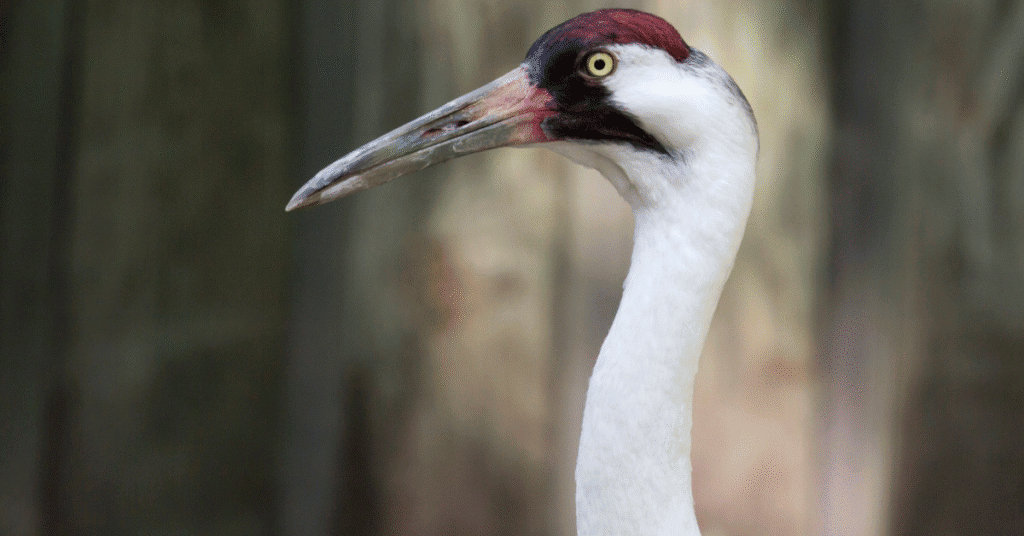
7. Paynes Prairie Preserve State Park, Florida
- Some eastern Whooping Cranes winter in Florida.
- This park, near Gainesville, has had repeat sightings.
- Visitors can scan the wet prairies and marshes for rare white silhouettes.
8. White River Marsh, Wisconsin
- This area serves as another reintroduction and nesting site for the eastern migratory population.
- Cranes use the wetlands here during the breeding season.
- Birders often see family groups with chicks in summer.
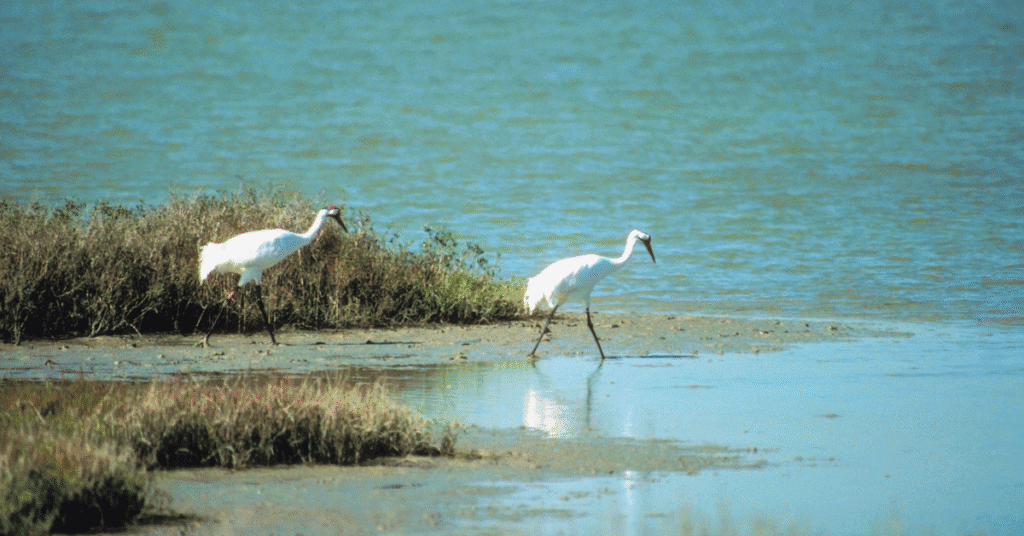
9. Bosque del Apache National Wildlife Refuge, New Mexico
- Famous for wintering Sandhill Cranes, geese, and raptors.
- Whooping Cranes are rare here, but individuals from the reintroduced non-migratory flocks sometimes appear.
- Worth scanning large crane flocks carefully.
10. Grays Lake National Wildlife Refuge, Idaho (historic site)
- The site of the first experimental cross-fostering project with Sandhill Cranes in the 1970s.
- Today, it’s still used by cranes during migration, though Whooping Cranes are uncommon.
- A place of historic significance in conservation efforts.
